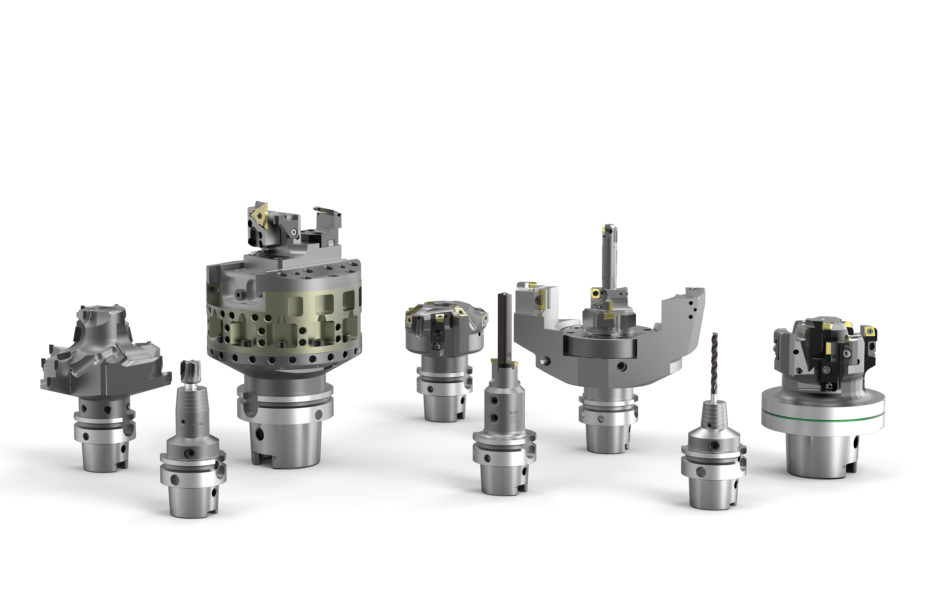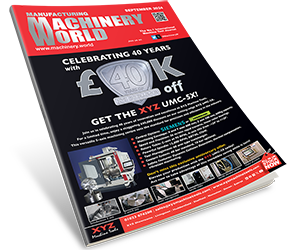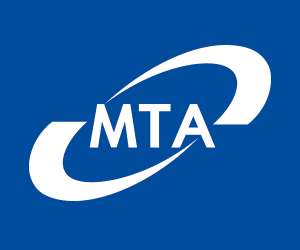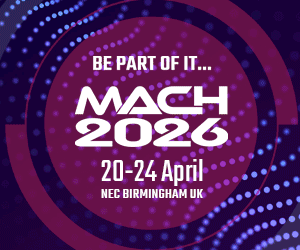Reliable & Cost-Effective Production of Turbochargers
The turbocharger has been a mainstay in the automotive industry for some time. State-of-the art turbos are used in diesel vehicles and almost all automotive manufacturers offer a turbocharged petrol engine. Why? The turbocharger makes comparable performance with a smaller engine capacity possible and that contributes to the advance in downsizing. Turbochargers also contribute to the reduction in fuel consumption and are therefore fundamental in meeting strict emission limits. With turbochargers being so integral to automotive powertrain units, it is little surprise that MAPAL offers production solutions and cutting tools for the complete machining process.
 Challenge for machining tools
Challenge for machining tools
Most turbochargers are exhaust gas turbochargers and each different automotive manufacturer has a different design that incorporates special geometries and the need for special tools. However, when it comes to petrol engines, there is one factor that is common in all variants, the very high temperatures achieved during operation. It is due to this reason that the turbine housing, the so-called ‘hot side’ is manufactured from a very abrasive, heat-resistant material. These materials represent a particular challenge for every machine tool, especially regarding the cutting tools applied.
As a clear leader in the automotive industry, MAPAL has taken up these challenges and developed new cutting materials and tool geometries. In fact, MAPAL now offers the complete process solution for machining turbochargers – this includes the design and manufacture of all cutting tool types. MAPAL develops drills, milling cutters, reamers and mechatronic actuating tools that can be matched to the related geometry of the turbocharger. As the benchmark in the automotive sector, MAPAL also assists customers during the continuous development of processes to reduce cycle times, cost-per-part and also with the improvement of tool life. As such, combination tools that undertake multiple machining operations in one single machining operation form part of the portfolio of MAPAL solutions.
 A significant percentage of turbocharger machining can be implemented using tools with ISO indexable inserts. This includes the multitude of machining processes on the challenging ‘hot side’ of the turbocharger. MAPAL has developed a cutting material specially matched to the machining of heat-resistant cast steel. This ingenious new cutting material technology extends tool life significantly, thereby improving cost-effectiveness and productivity, despite the abrasive nature of the material.
A significant percentage of turbocharger machining can be implemented using tools with ISO indexable inserts. This includes the multitude of machining processes on the challenging ‘hot side’ of the turbocharger. MAPAL has developed a cutting material specially matched to the machining of heat-resistant cast steel. This ingenious new cutting material technology extends tool life significantly, thereby improving cost-effectiveness and productivity, despite the abrasive nature of the material.
Complex boring tools with ISO indexable inserts
Every turbocharger incorporates a V-band that requires machining and along with the material properties, an interrupted cut is often a challenge during the pre-machining process. MAPAL relies on its complex boring tool with ISO indexable inserts to pre-machine the V-band as well as to pre-machine the internal contour of the turbine.
This enables the MAPAL solution to machine internal and external features simultaneously, allowing multiple steps to be machined. The tool operates counterclockwise to transport the chips out of the component and to prevent damage to the internal contour of the turbine. For example, a MAPAL V-band tool is frequently applied in diameters of 49, 70.5, 73 and 90mm using MQL cooling to process turbines at a cutting speed of 70 m/min with a 0.4mm feed rate. At optimal machining conditions, the MAPAL tool easily achieves a tool life of beyond 75 parts prior to any necessary tool changes.
Turning on the machining centre using TOOLTRONIC
A particular challenge during the machining of the turbine housing for exhaust gas turbochargers is the main turbine bore. Production is subject to close tolerances in relation to shape, position and surface finish and the bore is a bell-mouthed shape to generate the best possible flow and performance characteristics. MAPAL undertakes this machining operation using its TOOLTRONIC system with the LAT attachment (linear actuating tool). TOOLTRONIC is a mechatronic tool system with a full NC axis integrated into the existing machine controller whereby the mounting tool is fitted with three inserts; one for roughing and two for finishing. By applying the TOOLTRONIC system, manufacturers can precisely machine the turbine housing at cutting speeds of 140m/min for roughing and 120m/min for finishing at feed rates from 0.15mm to 0.4mm, achieving a tool life of beyond 50 parts when applying a tool in the typical diameter range of 40.5 to 57.295mm.
 New face milling cutters for roughing
New face milling cutters for roughing
MAPAL recently announced a new milling range with pressed, radial ISO indexable inserts. The milling cutter for roughing the face surface on the turbocharger housing comes from this range. The ISO indexable inserts with 16 usable cutting edges are the highlight of this face milling cutter and with 16 edges, it is a particularly economical prospect for turbo manufacturers. The 125mm diameter face mill with 14 inserts undertakes dry machining and runs at a speed of 80m/min with a feed rate of 0.12mm per tooth to achieve maximum productivity with a tool life of 125 parts.
Diameter turning tool with tangential technology
Another new tool from MAPAL is the turning tool system for pre-machining the catalytic converter flange. Very cost-effective, this system incorporates tangential technology and is used on the diameter and due to the upright and horizontal installation of the LTHU inserts, it allows eight effective cutting edges to be used per indexable insert.
The four tools mentioned all demonstrate the different machining tasks on a turbocharger and also the variety of tools and know-how available from MAPAL. From standard milling cutters through to mechatronic actuating tools and even complex boring tools, the programme includes all the tools necessary for machining turbochargers. MAPAL designs the complete machining process, so the most reliable and cost-effective strategy for the customer is used. There is always a close eye on accuracy down to the micron, so that turbochargers achieve the highest possible efficiency in operation.







